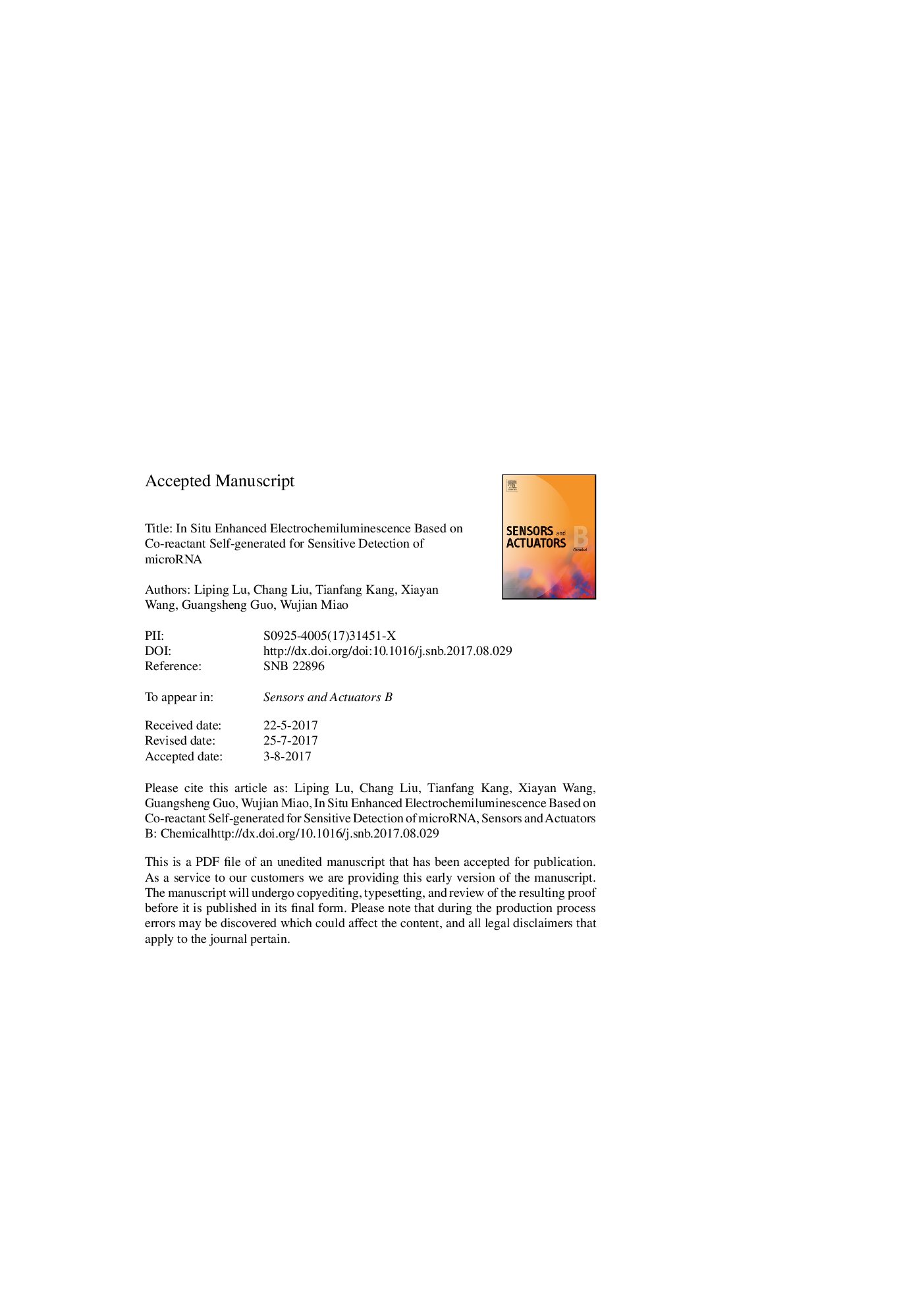| Article ID | Journal | Published Year | Pages | File Type |
|---|---|---|---|---|
| 5008590 | Sensors and Actuators B: Chemical | 2018 | 33 Pages |
Abstract
An ultrasensitive and selective miRNA biosensor based on the luminol-H2O2 electrochemiluminescence (ECL) system using hemin as a catalyzer for in situ ECL signal enhancement was reported. DNA probe was tethered onto the electrodeposited Au nanoparticles on a glassy carbon electrode, and the remaining active sites were then blocked with glucose oxidase (GOD). Subsequently, followed by miRNA hybridizing with the DNA probe, hemin molecules acted as the essential enhancer of ECL were intercalated into the DNA/miRNA duplex structure. The fully constructed biosensor was placed in a phosphate buffered solution containing luminol and glucose, where glucose was enzymatically decomposed by GOD to H2O2. Formation of reactive oxygen species (O2â) from H2O2, which was a key step for luminol ECL production, was efficiently catalyzed by the intercalated hemin. Thus, enhanced ECL signal was obtained. Under the optimal conditions, this miRNA biosensor could sensitively and selectively detect target miRNA over approximately seven orders of magnitude between 0.050 and 1.0Â ÃÂ 105Â pM, with a limit of detection of 50Â fM. miRNAs extracted from the A459 cell line were quantified with the biosensor. The ECL enhancement strategy presented in this paper could open a new route for the development of extremely sensitive ECL based biosensors.
Keywords
Related Topics
Physical Sciences and Engineering
Chemistry
Analytical Chemistry
Authors
Liping Lu, Chang Liu, Tianfang Kang, Xiayan Wang, Guangsheng Guo, Wujian Miao,
